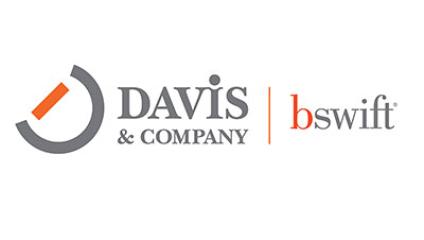
Another employee town hall meeting is coming up. And here’s your chance to transform this event from informative (but not very energizing) to a memorable and motivational experience.
How? You guessed it: by ramping up employee participation.
I can hear your objections now:
- “The agenda allows for participation, but leaders talk too much, so we run out of time.”
- “We invite employees to ask questions, but very few do.”
- “Our technology is okay, but not great, so there aren’t a lot of options.”
Ready for some good news? There are simple ways you can overcome the obstacles to make participation a core element of every town hall.
Why is this so important? First, because employees pay more attention and retain knowledge more fully when they’re involved in the action. And—especially important in today’s disconnected workplace—town halls help employees feel they’re part of a community.
So let’s look at five ways to increase participation at your next virtual town hall:
1. Reboot objectives
When was the last time you really thought about why your organization holds town hall meetings? If you ask a leader, her quick response might be: “to keep employees informed.”
But that’s not reason enough to spend time to bring a large group of employees together. By articulating outcomes that are more ambitious, you set expectations that the town hall will be more than a collection of information; the meeting will be a focused experience that creates knowledge and builds motivation.
So start by defining tangible, specific objectives like these:
- Increase confidence in the company and trust in leaders
- Create learning about an issue that’s vital to the organization
- Involve employees to create buy-in and motivation
- Prepare employees to take action
2. Create a choreographed agenda
I’ve learned from years (well, decades) of transforming town halls that a traditional agenda—a simple list of topics—doesn’t cut it. Unless you manage time and plan participation, your town hall is likely to devolve into the same-old string of presentations.
So you need an agenda that describes in detail what’s going to happen and when. The agenda should also be built with flow in mind—to envision how you’ll create energy as the session progresses.
Here’s a simple example of what I mean:
- Welcome/introductions (5 minutes)
- Thank you for a great year; recognize teams and individuals that made a difference (5 minutes)
- Recap seven priorities for the coming year, giving a tangible example for each priority (5 minutes)
- Focus on customer service priority: what’s happening with our competitors, why customer service is a differentiator, how we’re going to go about improving our scores by 10% (15 minutes)
- Employee perspectives on customer service, brainstorm initial ideas, Q&A and discussion (25 minutes)
- Next steps (5 minutes)
3. Appoint a facilitator
Now that you’ve got a choreographed agenda, how do you make sure your approach is followed? After all, most town halls involve Type A senior leaders with healthy egos. Even with the best intentions, those leaders can run roughshod over the most well-designed plan.
That’s why you need a strong facilitator to manage the meeting. Are you that person? Sure, if you’ve got the confidence and assertive personality to herd the big cats. But you may be more comfortable recruiting a more senior person to manage the wild beasts. In some organizations, the head of HR or the senior VP of Corporate Communication is happy to take on the role.
4. Set expectations
Once the facilitator is on board, share your recommended approach with senior leaders.
I usually advise clients to present the town hall strategy this way:
- Provide context. Describe how town halls are a key component of your internal communication program and share positive feedback from employees about past town halls.
- Give evidence to make your case for change. Include statistics on how many employees are working remotely and how that’s affecting their needs for communication and community. Share suggestions from employees about wanting more contact with leaders and more opportunities to comment or ask questions.
- Present your proposed approach: a town hall with a more focused agenda and opportunities for employee participation.
- Hone in on details about how it’s going to work, providing the agenda and describing the facilitator’s role.
Once you’ve gotten the go-ahead to proceed, make sure you set expectations for employees as well. In both the invitation and at the start of the town hall, state how this meeting is going to be different and describe how employees will be asked to participate.
5. Use each participation tool for the job it does best
The best news about a virtual town hall meeting is that it creates a level playing field for employees to participate. No longer are some employees in the room with leaders, while others are watching a broadcast and still others are dialing in.
Every major meeting platform (Microsoft Teams, Zoom, Go-to-Meeting, Google Meet, etc.) offers features that allow employees to ask questions, make comments and share their feedback and perspectives. And there are other applications you can use to enhance the experience.
Each tool has value; it’s just a matter of choosing the feature that meets your needs. For example:
- Polling/voting. The safest way for employees to participate is as part of a big group. You can create a one-question poll to break the ice or use polling as a way for employees to respond to various aspects of a topic. And with apps like Mentimeter and Poll Everywhere, you can choose from different formats, from multiple choice to word clouds.
- Chat. I often wonder why chat isn’t used more often; it’s so easy and versatile. Employees can ask questions via chat any time during the meeting rather than wait for the official Q&A segment to start. Or you can invite employees to comment or offer ideas. For example, a leader can say, “What are your ideas for addressing this issue?” The key to using chat is to assign someone to monitor the discussion and be prepared to narrate questions or comments.
- Breakout rooms. This is one of my favorite Zoom features: the ability to send participants into different “rooms” for separate discussions. For an in-person town hall, I’ve facilitated breakout sessions during which employees generate questions about a topic or share ideas on how to solve a problem. Virtual breakout rooms can work the same way. (I’ve only used Zoom for this activity, but other platforms—such as Google Meet—are constantly introducing features like this. So check out demos offered by the platform or ask your tech people for advice.)
- Whiteboards or brainstorming tools. This feature also varies by platform, but it represents an interesting opportunity for everyone to take part. For example, invite employees to offer ideas on how to address a challenge the organization is facing.
Remember that every town hall offers an opportunity to experiment with different ways of involving employees. People in your organization may embrace taking part in a poll, but it may take a bit of practice to encourage them to comment. The key to enhancing participation at a virtual town hall is to stay flexible and keep trying new things.





